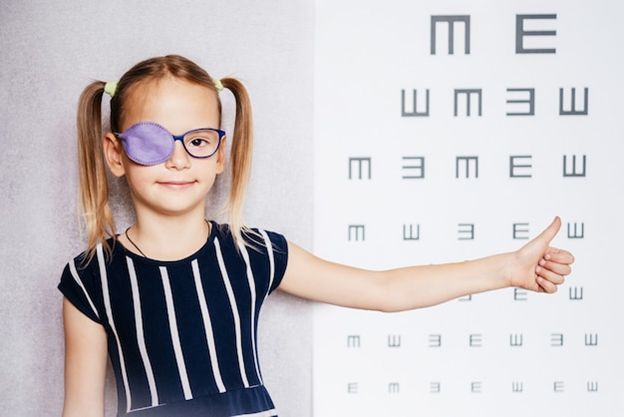Amblyopia is a common childhood vision problem where one eye becomes weaker, often leading to what is called “lazy eye.” It’s crucial to address because it affects how children see the world. The early you catch it, the better the chances of helping your child’s vision improve. Recognizing and treating amblyopia can prevent lifelong issues and enhance a child’s learning and development opportunities.
What is Amblyopia?
Amblyopia occurs when one eye doesn’t communicate well with the brain, making the vision in that eye blurry while the other eye sees better. This isn’t just another vision problem; instead, it’s a problem in how the brain processes the visual signals from the eyes. People often confuse amblyopia with simply having weak eyes, but it’s much more than that. The term “lazy eye” refers to this specific brain-eye communication issue rather than any inherent laziness of the eye itself. Children might not always show outward signs, making it hard for parents to detect. Understanding amblyopia helps differentiate it from other eye problems, emphasizing the need for direct and early treatment.
Normal Eye Development: A Foundation for Understanding Amblyopia
Children’s eyes develop rapidly, especially in the first five to six years. During this critical period, both eyes need equal usage for them to develop correctly. This means that each eye must send clear signals so the brain can process them well. If one eye struggles or doesn’t get enough use, amblyopia might develop. Proper brain-eye communication starts when both eyes receive balanced stimulus, leading to optimal vision development. This balance is what sets the foundation for strong vision throughout life.
Unraveling the Causes of Amblyopia
Amblyopia can arise from a few main causes. It’s important to identify and understand these:
- Strabismic Amblyopia: This happens when the eyes are misaligned, causing one eye to wander.
- Refractive Amblyopia: This type arises when there’s a major difference in prescription strengths between the two eyes.
- Deprivation Amblyopia: Occurs when vision is obstructed, often because of cataracts.
Genetics can also play a role in amblyopia, where a family history might increase risks. While rare, sometimes both eyes can be affected, each struggling to send clear signals to the brain. Knowing these causes helps in choosing the right treatment path.
Identifying Symptoms and Diagnostic Challenges
Spotting amblyopia can be tricky since symptoms aren’t always obvious. Parents and teachers might notice a child squinting, tilting their head, or struggling with depth perception. If a child covers one eye often, it could be a sign, too. Early recognition is vital to prevent long-term impacts. Vision screenings in preschool can help catch amblyopia early, providing a chance for timely intervention.
The Critical Role of Early Detection
The young brain is quite adaptable, meaning early intervention can significantly improve outcomes for amblyopia. If left untreated, children might face lasting problems with vision, impacting their learning and future careers. Early detection, through regular eye check-ups, can safeguard against these long-term challenges. Recognizing amblyopia early means giving children a better chance to succeed in their education and later professional life.
Exploring Treatment Options for Amblyopia
Treating amblyopia involves several effective strategies:
- Corrective Lenses: Glasses can help correct the vision imbalance.
- Patching: Covering the stronger eye forces the weaker eye to work harder.
- Atropine Drops: These drops blur the vision in the better eye, encouraging the use of the weaker one.
Underlying issues, like cataracts, need addressing to enhance treatment success. Most treatments show significant progress over time. Regular monitoring ensures any adjustments can be made promptly, leading to better outcomes.
Preventing and Managing Life with Amblyopia
Regular vision screenings for kids are essential to prevent and manage amblyopia. Early detection makes a huge difference, leading to more success in treatment. Many children with amblyopia go on to lead full, productive lives. For adults living with the condition, understanding how it impacts daily activities and career paths helps in managing expectations and finding suitable roles.
Conclusion: A Call to Action
Addressing amblyopia early can have life-changing benefits. Parents should prioritize regular eye screenings to catch issues early. It’s crucial to seek professional advice and act swiftly if any signs of amblyopia are present. With the right approach, many of the challenges amblyopia presents can be successfully managed.
Consult us today at Geetha Eye Hospital for expert guidance


